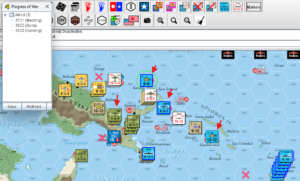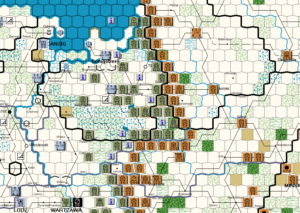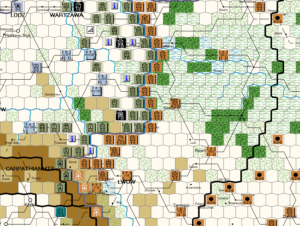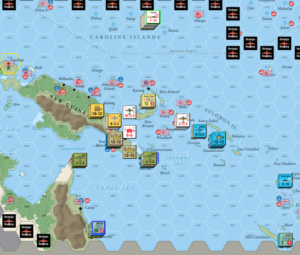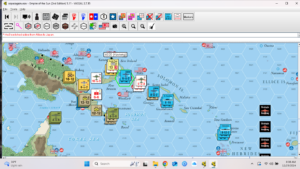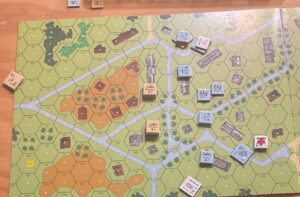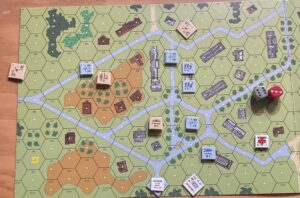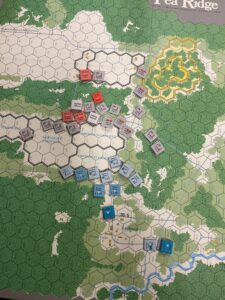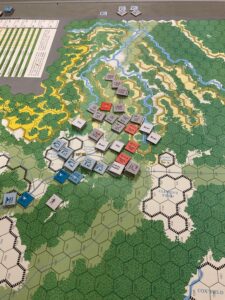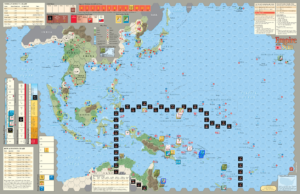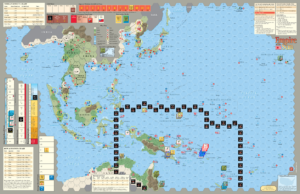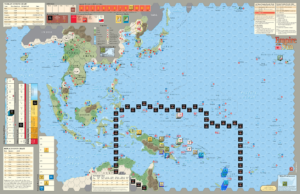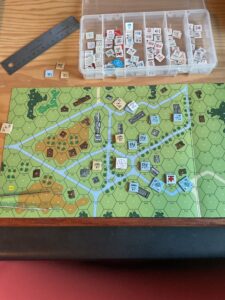Whew! That took awhile.
Was pleased the last turns flowed pretty smoothly. Especially when compared to my initial efforts. Well, that’s what should happen, right?
I kept some play notes, but as with most efforts at this, what was cogent at the time is now indecipherable. So, this post will not include a blow-by-blow account of Turn 6.
However, I can chronicle some of my lessons learned. But first, a picture.
During Turn 6, I had to take four airfields/ports/resources to meet Progress of War requirements. I only took three, but this shortfall had no impact on whether the Allies won or lost the scenario.
What did have an impact was my capture of four ports during the course of the game. They are highlighted by the red arrows. This fulfilled the conditions for an Allied Victory.
The “X”s represent locations where I botched the rules.
The lower right “X” represents my failure to move the US Naval Headquarters (HQ) to control landings north of Guadalcanal. I assumed actions there could be initiated by the headquarters in Hawaii. It’s in range, but the scenario rules limit that HQ’s influence to the New Hebrides. Only the play of the “Halsey Card” extended the HQ’s range to cover operations nearer Rabaul.
The “X” in southern New Guinea indicates a significant rules gaffe. I had been using the SW Pacific Headquarters to activate both U.S. and Australian units. No! Only the Australian HQ can activate Australian air/ground/naval units, unless a special event card is played.
The “X” in northern New Guinea marks a real tactical blunder. I activated an Australian ground unit with an attack strength of “11” to battle an opponent with a defense strength of “12”. This significantly reduced my chances of destroying the Japanese unit, as it would take a D10 roll of at least “7” (inflicting 1.5 times the Allied attack strength) to eliminate the Japanese unit. The Allies rolled low and the Japanese rolled high. The understrength Australian unit was eliminated. Dumb.
I started playing cards for their Operations Value rather than as events during Turn 6. The reason was unless the event involved a significant special condition, the lower intelligence value of the operation use made a successful defender reaction die roll less likely….in theory. This is very important since no reaction means the attack is a Surprise Attack, with the defender taking losses before they can fight back.
However, there were a couple of occasions when a reaction roll of two or lower was needed, and damned if it wasn’t rolled! Is there something creepy going on with VASSAL die rolling iterations?
I now fully appreciate why this game is so well regarded. Encouraged by my rules familiarity and increased speed of play, I’m going to give it one more try.
